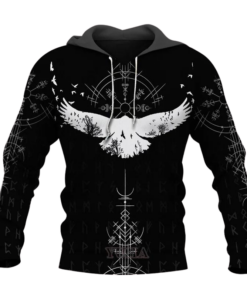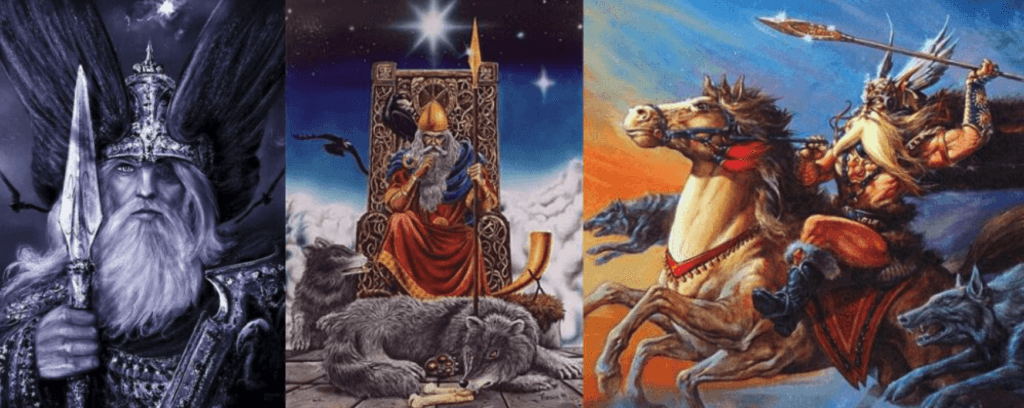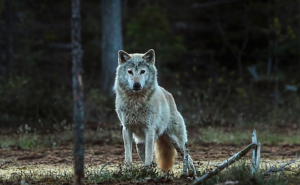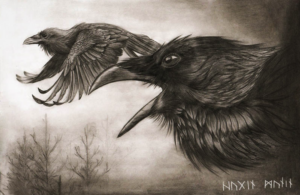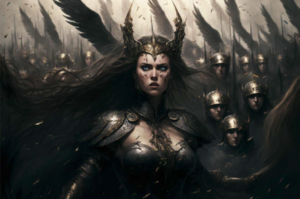Ragnarok is the prophesied end-of-the-world event in Norse mythology. It is a series of future events, including a great battle foretold to ultimately result in the death of a number of major deities, occurrence of natural disasters, and the subsequent submersion of the world in water. Ragnarok plays a crucial role in Norse eschatology and is one of the most important events in Norse mythology.
The events leading up to Ragnarok are foreshadowed in Norse mythology. Three harsh winters known as Fimbulvetr will precede Ragnarok. Fimbulvetr will be preceded by war, moral decay, and familial hatred. During this time, the sun will become dark and the moon’s glow will be severed from the heavens. The stars will disappear. Wild torrents will rush through the air as the earth sinks into the sea. Giant wolves Skoll and Hati will devour the sun and moon, plunging the world into darkness.
Magical creatures will appear during this chaotic time of Fimbulvetr. The crowing of the cockerel Fjalar from Jotunheim will signal that gods know their fates. Eggþér will pound his drum on the roof of his hall in Jotunheim in preparation for Ragnarok. A red cock will crow in the halls of Hel.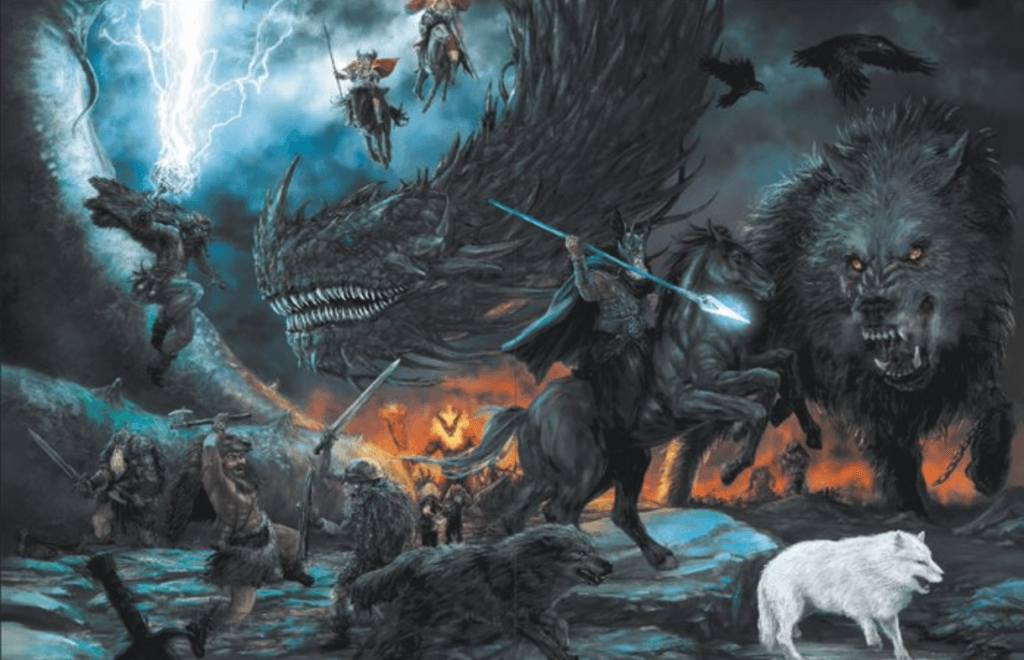
The gods had prepared for Ragnarok beforehand. Odin established Valhalla, home of the brave dead who lived by the pagan idea of an honorable death in battle. From among all races and clans, Odin chose the most spirited maidens and named them Valkyries (“Choosers of the Slain”). Valkyries’ role was to ride to battlefields and supernatural beings. Half of the slain would go to Valhalla while the other half would go to Freyr’s field Fólkvangr in Vanaheim.
The gods chained the monstrous wolf Fenrir to prevent Ragnarok from happening too soon. Fenrir is a giant wolf, the son of Loki. They tossed the world serpent Jormungand into the great ocean that circles Midgard. They banished Hel, Loki’s daughter, to rule the realm of the dead.
When Ragnarok finally arrives, the first sign will be Fimbulvetr where three winters will come one after another with no summers in between. It is believed that during this time all moral laws and restraints will dissolve, and brothers will fight among themselves.
The great wolf Fenrir will break free from his divine fetters and devour Odin. Jormungand, the world serpent, and Thor will face each other in deadly combat, and both will die from their respective wounds: Jormungand will die from Thor’s famous hammer Mjolnir and Thor, son of Odin, will take nine steps before he dies from the serpent’s poison.
The gods and their enemies will gather for the ultimate battle on the plain of Vigrid. Odin will lead the gods to Vigrid, the location of the final battle. With him will be Freyr and Heimdall, the gods of fertility and vigilance respectively. Fenrir will be there as well as the giants led by Surtr, the fire giant from Muspelheim. Hel, the goddess of death, will lead an army of revenants and giants. Loki will also be freed from his bonds and will aid the giants.
Many great battles will take place. The first to fall will be Freyr, who is doomed because he gives his famous sword to the giant Skirnir. Sköll and Hati, two wolves, will pursue the personifications of the Sun and Moon and finally devour them. Odin, leader of the gods, will be swallowed by Fenrir. Thor will kill the Midgard Serpent, but then will die of its venom. Loki will fight and kill Heimdall, keeper of the rainbow bridge Bifrost. Surtr will scatter fire over the Earth and burn all the world with his fiery sword.
With the gods dead and the world consumed in flames, Ragnarok will end in chaos and destruction. Three Fates – gods of destiny, will arrive to take a stand against the gods of Muspellheim. Meanwhile, a new and fertile world will emerge from the sea, the surviving and emerging gods will meet, and the soul of dead heroes slain in battle will arrive from the fields of Hel. Balder, god of light, will return from Hel and take his place in the new world.

Two human survivors, Lif and Lifthrasir, will have fled to the forest of Hoddmímis holt and will repopulate the world. They will sustain themselves on the morning dew. From them will spring a new race of people that populate Midgard afresh.
In the new post-Ragnarok world, the land shall rise anew, green and fair, from the sea. The gods will be reborn where once stood their home, in the remade world that exists without strife or evil. Magni and Modi, sons of Thor, will inherit their father’s powerful hammer Mjolnir. Baldr and Nanna, along with all the gods that survived Ragnarok will live in the village of Vidbláin. A new sun will replace the old one, providing warmth for the fertile soil as life begins again. While the future is uncertain, Scandinavians found hope in Norse mythology’s promise of renewal after destruction, a world remade, and eternal cycles of creation and re-creation.
So in summary, Ragnarok was a series of future events that were foretold to ultimately result in the occurrence of catastrophes, glorious battles, and the deaths of major figures before the world is consumed by fire, only to be reborn. It was a climactic event that featured prominently in ancient Norse prophecies, poetry, and artwork from Viking civilization.


